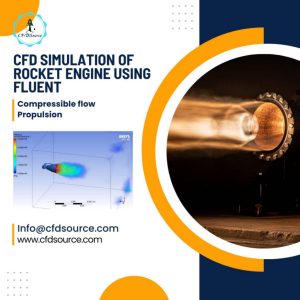There’s a certain romance to the old-school wind tunnel, isn’t there? A full-scale clay model, smoke wands, engineers in lab coats. It’s impressive, but I can tell you from experience, it’s a bottleneck. A monstrously expensive and slow bottleneck. Today, the real magic, the real progress, happens on a screen before a single piece of metal is ever cut. We’re talking about a complete shift in philosophy, where we can analyze not just airflow but also intricate heat flows, which is where our specialized [CFD Thermal Analysis Services] come into play. Understanding the critical role of CFD in modern automotive design isn’t just an academic exercise; it’s the key to building better, safer, and more efficient vehicles, faster than ever before.
1. Why Relying Solely on Physical Prototypes is a Thing of the Past
I remember a project from about ten years ago. We were working on a new sports coupe. The physical prototype came back from its first track day with a major overheating issue in the rear differential. The fix? A frantic, last-minute redesign of the rear bumper and underbody, costing weeks of delay and a sum with a lot of zeros at the end. That entire fiasco could have been predicted and solved in a few days of simulation.
Physical testing is no longer the primary design tool; it’s the final validation step. Relying on it for iterative design is like proofreading a book only after you’ve printed 100,000 copies. CFD lets you build and break a thousand digital prototypes a month, finding those critical flaws when the cost of a fix is just a few hours of an engineer’s time.
2. What is Automotive CFD? A Digital Twin for Every Physical Force
Forget the textbook definitions for a second. At its heart, automotive CFD is about creating a “digital twin” of a vehicle—or just a small part of it—and throwing physics at it. We’re not just simulating air. We’re simulating how that air carries heat away from a radiator, how water splashes up into the engine bay, or how fuel vapor behaves inside a tank.
It’s a virtual sandbox where we can ask incredibly specific questions. What happens to brake temperature during a hard stop? How does a 15 mph crosswind really affect the car’s stability on the highway? This level of insight is fundamentally similar to how we model airflow in other complex environments, from [analyzing aerodynamics in the aerospace industry] to predicting energy output from wind turbines. The physics are universal; the application is what makes it an art.
3. Core Application #1: Mastering External Aerodynamics for Peak Efficiency and Stability
This is the bread and butter of automotive CFD, the one everyone thinks of first. But it goes so much deeper than just achieving a low drag coefficient (Cd). We’re chasing after a complete aerodynamic balance that impacts everything from fuel economy in a truck to the downforce keeping a supercar glued to the track at 200 mph.
3.1. Drag and Lift Optimization: The Race for Every Percentage Point of Efficiency
It’s a game of millimeters. We once spent three days just refining the shape of a side-view mirror housing. The result was a 0.005 reduction in the car’s total drag. Sounds tiny, right? But over the 150,000-mile lifetime of a vehicle, that small change translates to real-word fuel savings for the customer. We iterate on everything: the angle of the A-pillar, the shape of the underbody trays, the design of the wheel spokes. Each element is a small piece of a very complex puzzle.
3.2. Managing Crosswind Stability and Aeroacoustics (Wind Noise Reduction)
Ever felt a sudden gust of wind on the freeway shove your car to the side? That’s a crosswind stability problem. Using Unsteady RANS or even more complex DES simulations, we can predict exactly how a vehicle will behave in these transient conditions, allowing designers to make adjustments that improve driver confidence and safety.
And then there’s the noise. That annoying whistle you might hear from the window seal at 70 mph. That’s aeroacoustics. We can pinpoint the exact source of that vortex-shedding-induced noise and fix it in the digital model, long before a customer ever has to complain about it. It’s amazing how the same principles used for [simulating wind effects around massive buildings] can be scaled down to silence a tiny gap in a car door. 🌬️
4. Core Application #2: Advanced Thermal Management from Engine Bay to Battery Pack
The game completely changed with Electric Vehicles, but even before that, managing heat was a nightmare. Now, with massive battery packs that are extremely sensitive to temperature for both performance and longevity, thermal management isn’t just a feature; it’s the core of the vehicle’s reliability.
4.1. Underhood Thermal Simulation: Preventing Overheating in ICE and Hybrid Vehicles
Picture this: a hot engine block, a glowing exhaust manifold, a turbocharger, multiple radiators and coolers, all packed into a tiny, airflow-restricted space with sensitive electronics nearby. Our job is to ensure that every component stays within its safe operating temperature, even when idling in Death Valley traffic. We simulate “heat soak” scenarios—what happens after you shut off a hot engine—to make sure a plastic component doesn’t slowly melt or lose it’s integrity over time. It’s a complex, three-dimensional puzzle of convection, conduction, and radiation.
4.2. The EV Revolution: CFD for Critical Battery Thermal Management and Longevity
Batteries are divas. They want to be at a perfect, “just right” temperature. Too cold, and performance and range drop. Too hot, and you get accelerated degradation, or worse, thermal runaway. 💥 With CFD, we design and optimize the intricate cooling channels within the battery pack itself. We model the flow of coolant, ensuring every single cell gets the thermal attention it needs, whether it’s during a rapid charge event or a high-performance discharge. This is one of the most exciting frontiers, and the principles share surprising DNA with other high-tech fields, like [the CFD modeling used in biomedical devices] to ensure precise temperature control.
4.3. Brake Cooling and HVAC Systems: Ensuring Safety and Cabin Comfort
Brake fade is a terrifying thing. It happens when brake components get so hot they can no longer generate enough friction. We use CFD to design brake ducts and dust shields that channel cool air directly onto the rotors and calipers, ensuring consistent performance under heavy use.
And then there’s the comfort side. Nobody wants an HVAC system that blasts hot air on their face but leaves their feet frozen. We simulate airflow inside the entire cabin, optimizing vent placement and flow rates to create a uniform and comfortable environment quickly, without that annoying “drafty” feeling.
5. The CFDSource Workflow: How We Turn Complex Physics into Actionable Design Insights
Talking about these applications is one thing; delivering reliable results is another. Our process isn’t a black box. It’s a structured, transparent engineering workflow honed over hundreds of projects. It’s less about just running software and more about asking the right questions from the start.
5.1. Step 1: The Art of the Mesh – Why High-Fidelity Meshing is Non-Negotiable for Accuracy
You can have the most powerful solver in the world, but with a bad mesh, your results are garbage. It’s that simple. We obsess over mesh quality, especially in critical areas like the boundary layer. This means ensuring our y+ values are appropriate for the turbulence model we’re using, creating fine prism layers to capture near-wall physics, and maintaining good cell quality (low skewness) throughout the domain. This step is a craft and it’s where most inexperienced analysts fail. It’s often the difference between a pretty picture and a result you can actually trust.
5.2. Step 2: Selecting the Right Physics: From RANS/LES Turbulence Models to Multiphase Flow
Choosing the right physical models is critical. A standard k-epsilon model might be fine for a simple external aero analysis, but for predicting the complex, swirling flow behind a car, something more advanced like k-omega SST or even a DES (Detached Eddy Simulation) model is needed. Are we dealing with water spray? We’ll need a multiphase model. Extreme heat from the exhaust? We have to enable surface-to-surface radiation models. There is no “one click” solution; it’s about applying the right tool for the job.
5.3. Step 3: Validation Protocol – How We Correlate Simulation Data with Real-World Testing
This is how we build trust. We don’t just hand over a report and say, “Here you go.” Wherever possible, we seek validation data. This could be comparing our simulated drag coefficient to data from a competitor’s wind tunnel test, or matching our temperature predictions with thermocouple data from a physical prototype. This feedback loop is essential. It confirms our methodology is sound and gives our clients the confidence to make multi-million dollar design decisions based on our findings.
6. The Business Case: The Tangible ROI of Integrating CFD into Your Design Cycle
Let’s talk numbers. By using CFD to optimize a long-haul truck’s aerodynamics, a 5% reduction in drag can translate to over $2,000 in fuel savings per truck, per year. By catching a thermal issue in the digital phase, you avoid tooling changes that can easily cost upwards of $100,000.
The real ROI isn’t just about saving money, though. It’s about speed and innovation. CFD allows your team to test radical new ideas that would be too risky or expensive to prototype physically. It accelerates the entire development cycle, getting a superior product to market months, or even years, ahead of the competition.
7. The Future is Simulated: AI-Driven Design and Multiphysics in a Connected Automotive World
The field is moving fast. We’re already seeing the integration of AI and machine learning with CFD solvers to run thousands of design iterations automatically (generative design). The next frontier is true multiphysics—seamlessly coupling fluid dynamics with structural analysis (FSI), electromagnetics, and battery chemistry models in a single simulation. This holistic approach is the future, and understanding the role of CFD in automotive design is the foundation for getting there.
8. Partner with CFDSource: Turn Simulation into Your Competitive Advantage
Ultimately, computational fluid dynamics is not just a piece of software; it’s a strategic tool. It provides the deep physical insight needed to navigate the complex challenges of modern automotive engineering, from regulatory pressures on emissions to the paradigm shift of electrification. By leveraging expert-driven simulation, you don’t just solve problems—you create a significant, lasting competitive advantage.


